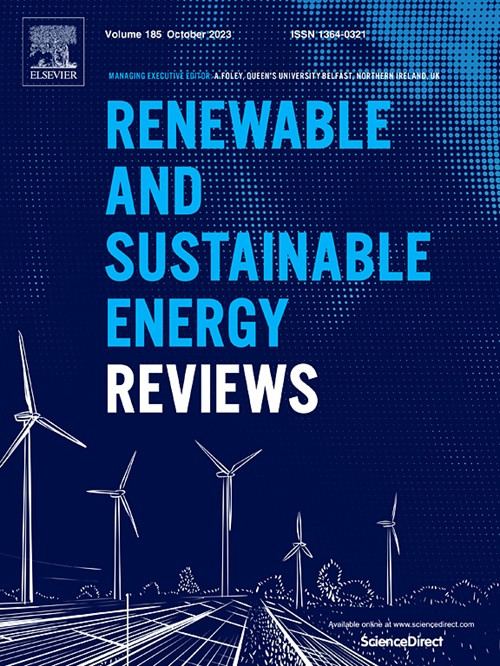Portfolio optimization of diversified energy transition investments with multiple risks
IF 16.3
1区 工程技术
Q1 ENERGY & FUELS
引用次数: 0
Abstract
Portfolio investments in diverse low-carbon power technologies constitute an effective strategy to mitigate the intermittency of renewables and contribute to the energy transition. However, multiple uncertain risk factors, ranging from internal technology costs to external policies and markets, introduce significant revenue risks. This work couples the real option with the portfolio optimization model to construct an investment decision framework that considers the value of original coal-fired facilities. It first evaluates the feasibility of low-carbon retrofits on existing coal-fired facilities and investments in renewable power under Carbon Emission Trading (CET) and Renewable Portfolio Standards (RPS). In addition, we generate an optimal diversified portfolio strategy concerning the investment revenue of each project. The results indicate that the inherent infrastructure with a shorter remaining lifetime is not a logical choice for low-carbon retrofits. Low-cost budgets and high-yield targets are critical elements that limit the proportion of renewable investments. Moreover, carbon price volatility is the most dominant market risk factor in various power project investments. Appropriately scaling up the proportion of renewables can counteract the sharp volatility in electricity and carbon prices. Contrary to the minimal effect of changing renewable quotas, tightening policy regulations on carbon caps may increase the proportion of renewables under higher revenue targets.
多重风险下多元化能源转型投资组合优化
对多种低碳电力技术的组合投资是缓解可再生能源间歇性和促进能源转型的有效战略。然而,多种不确定的风险因素,从内部技术成本到外部政策和市场,带来了重大的收入风险。本文将实物期权与投资组合优化模型相结合,构建了考虑原有燃煤设施价值的投资决策框架。报告首先评估了在碳排放交易(CET)和可再生能源投资组合标准(RPS)下对现有燃煤设施进行低碳改造和可再生能源投资的可行性。此外,我们还根据每个项目的投资收益制定了最优的多元化投资组合策略。结果表明,剩余寿命较短的固有基础设施不是低碳改造的合理选择。低成本预算和高收益目标是限制可再生能源投资比例的关键因素。此外,碳价格波动是各类电力项目投资中最主要的市场风险因素。适当提高可再生能源的比例可以抵消电力和碳价格的急剧波动。与改变可再生能源配额的最小影响相反,在更高的收入目标下,收紧碳排放上限的政策法规可能会增加可再生能源的比例。
本文章由计算机程序翻译,如有差异,请以英文原文为准。
求助全文
约1分钟内获得全文
求助全文
来源期刊

Renewable and Sustainable Energy Reviews
工程技术-能源与燃料
CiteScore
31.20
自引率
5.70%
发文量
1055
审稿时长
62 days
期刊介绍:
The mission of Renewable and Sustainable Energy Reviews is to disseminate the most compelling and pertinent critical insights in renewable and sustainable energy, fostering collaboration among the research community, private sector, and policy and decision makers. The journal aims to exchange challenges, solutions, innovative concepts, and technologies, contributing to sustainable development, the transition to a low-carbon future, and the attainment of emissions targets outlined by the United Nations Framework Convention on Climate Change.
Renewable and Sustainable Energy Reviews publishes a diverse range of content, including review papers, original research, case studies, and analyses of new technologies, all featuring a substantial review component such as critique, comparison, or analysis. Introducing a distinctive paper type, Expert Insights, the journal presents commissioned mini-reviews authored by field leaders, addressing topics of significant interest. Case studies undergo consideration only if they showcase the work's applicability to other regions or contribute valuable insights to the broader field of renewable and sustainable energy. Notably, a bibliographic or literature review lacking critical analysis is deemed unsuitable for publication.
 求助内容:
求助内容: 应助结果提醒方式:
应助结果提醒方式:


